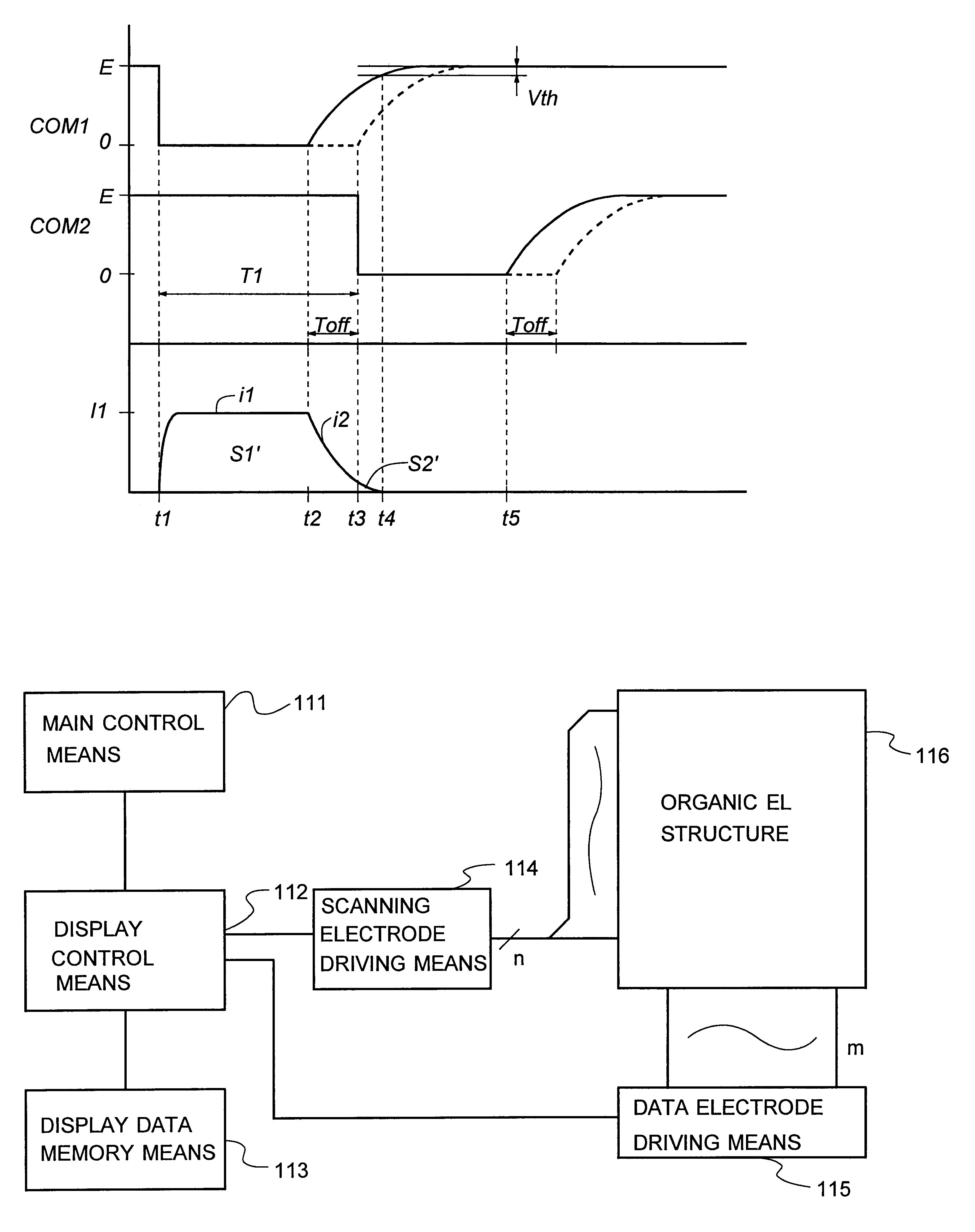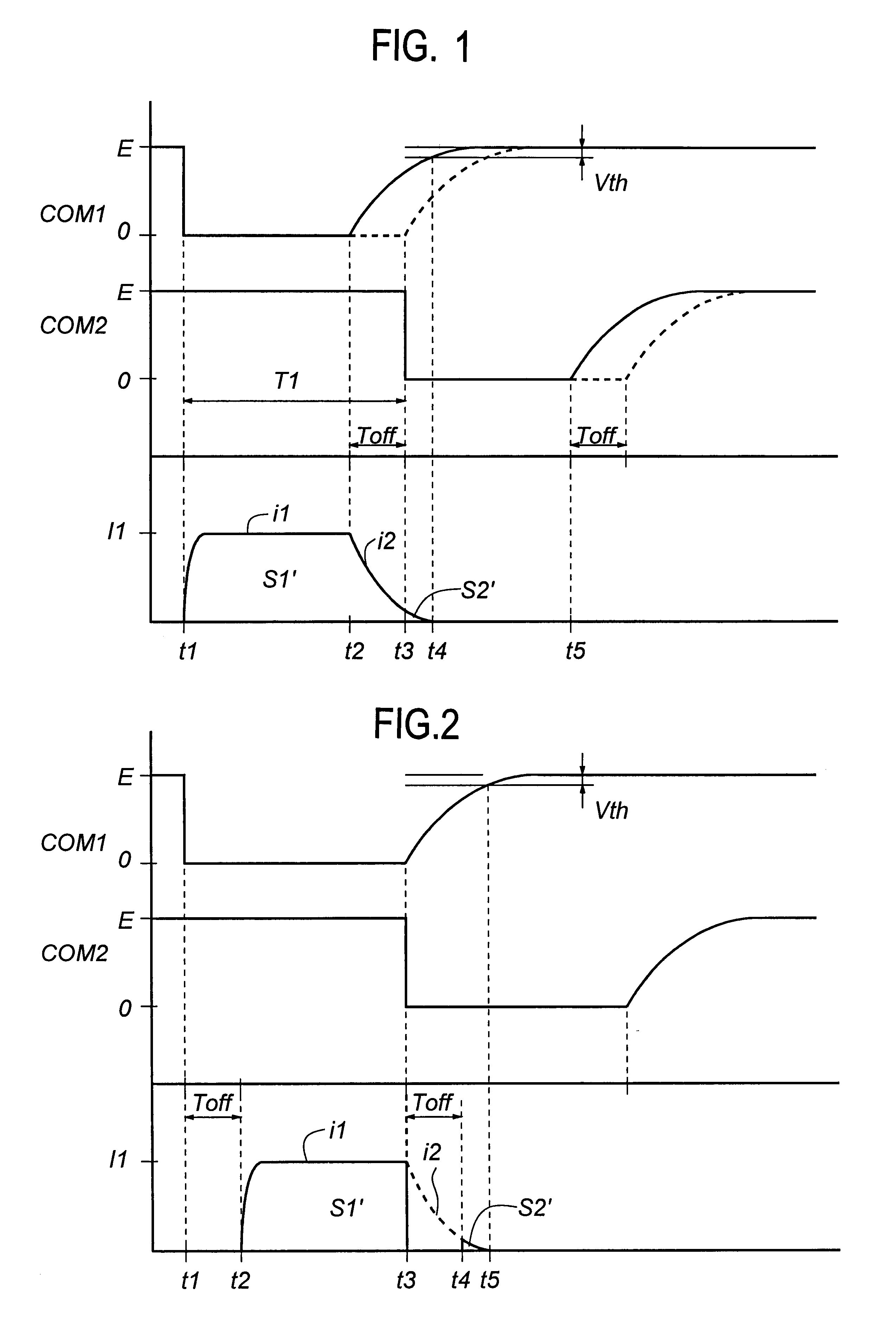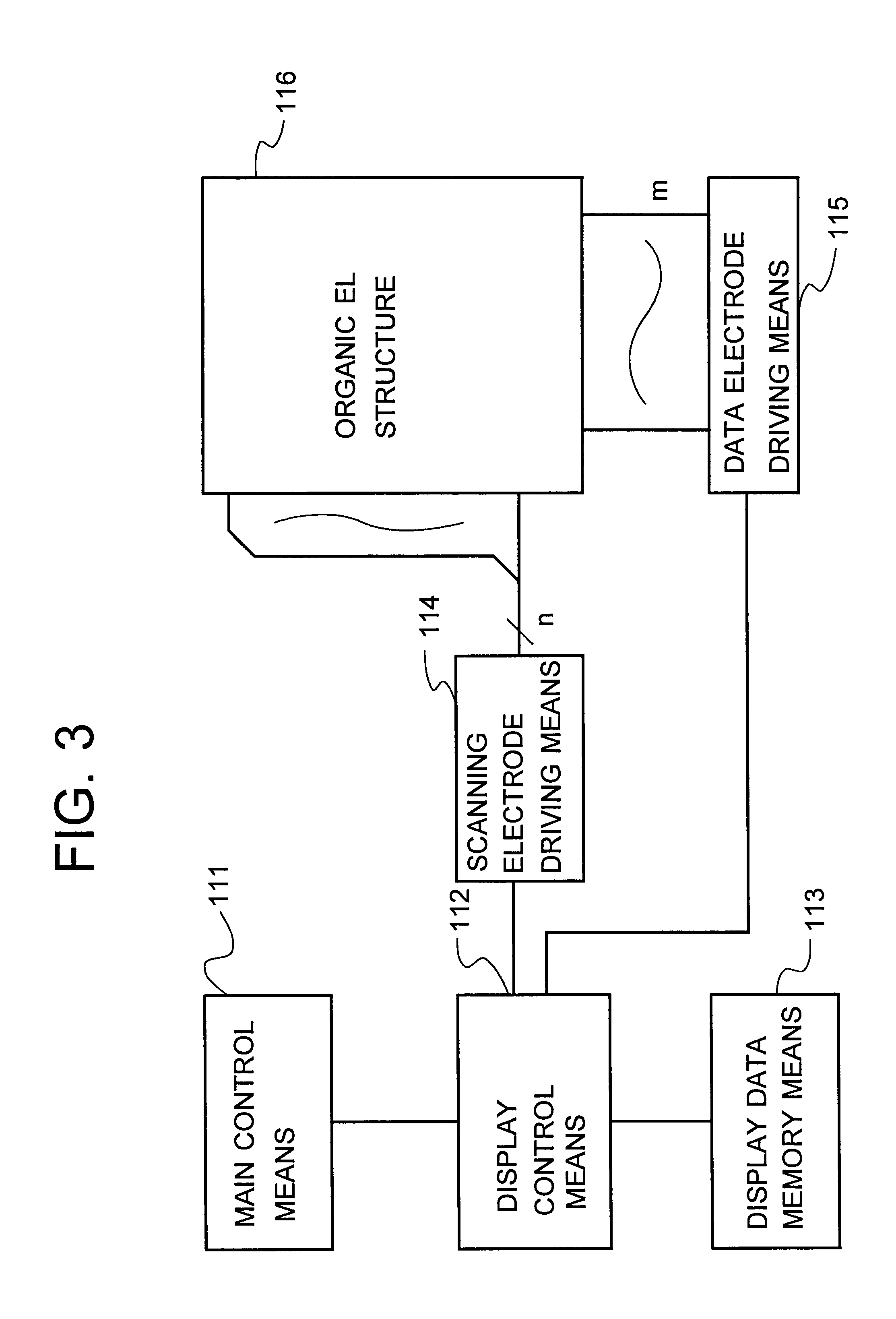System and method for driving organic EL devices
a technology of organic el and display, applied in the direction of instruments, static indicating devices, etc., can solve the problems of increasing the current i1 and affecting the quality of the display, and affecting the display quality
- Summary
- Abstract
- Description
- Claims
- Application Information
AI Technical Summary
Benefits of technology
Problems solved by technology
Method used
Image
Examples
example 1
FIG. 4 is a circuit diagram illustrative of the first example of the control means according to the present invention. In this example, a commercially available thermal head driver is used. By use of such a commercial IC, it is possible to save the expense needed for the development and fabrication of ICs and slim down the fabrication cost of the system.
In FIG. 4, data applied to an output stage 121 for driving the organic EL structure are captured from a serial input terminal SI by way of a buffer 125, and serially integrated into each flip-flop 129 in the right direction of the paper in response to a clock signal applied to a clock terminal CLK. It is here noted that this input signal can be fetched from a serial output terminal SO by way of a buffer 125.
The signal captured in each flip-flop 129, if required, may be latched in the flip-flop 128 by a latch signal entered from a latch input terminal LT and applied by way of a buffer 124. In this example, however, this function is no...
example 2
FIG. 6 is a circuit diagram illustrative of the second example of the control means according to the present invention. In this example, a commercially available PDP driver is used. By use of such a commercial IC, it is again possible to save the expense needed for the development and fabrication of ICs and slim down the fabrication cost of the system.
In FIG. 6, data for driving the organic EL structure (data electrode driving signal) are captured in a shift register 145 by way of a serial input terminal A or B. Then, the data appear serially at output terminals in the form of output signals S1 to Sn in synchronism with clocks in response to clock signals applied from a clock terminal CLK by way of a Schmitt inverter 144. It is noted that this shift register 145 enables the direction of shift to be set in response to a signal entered in a direction control terminal R / L.
The output signals S1 to Sn of the shift register 145 are entered in a latch 146 to slue or keep them at terminals ...
PUM
 Login to View More
Login to View More Abstract
Description
Claims
Application Information
 Login to View More
Login to View More - R&D
- Intellectual Property
- Life Sciences
- Materials
- Tech Scout
- Unparalleled Data Quality
- Higher Quality Content
- 60% Fewer Hallucinations
Browse by: Latest US Patents, China's latest patents, Technical Efficacy Thesaurus, Application Domain, Technology Topic, Popular Technical Reports.
© 2025 PatSnap. All rights reserved.Legal|Privacy policy|Modern Slavery Act Transparency Statement|Sitemap|About US| Contact US: help@patsnap.com



